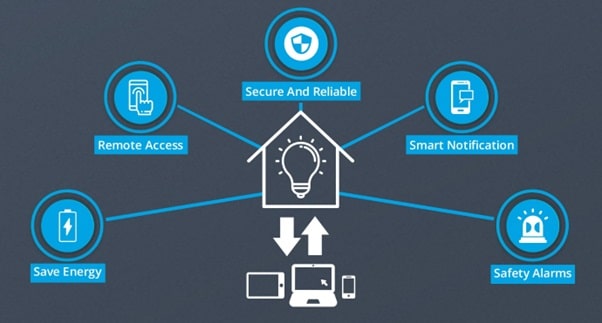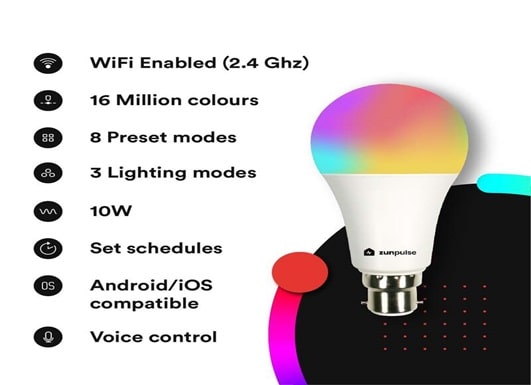Home »
IoT (Internet of Things) Tutorial
IoT-Enabled Smart Lighting
IoT-Enabled Smart Lighting: In this tutorial, we will learn What's Behind IoT-Enabled Smart Lighting, Value Proposition, Occupancy Detection, Customized Schedules, Remote Control, Energy-Efficient LED Bulbs, and How IoT-Enabled Smart Lighting Works?
By Shahnail Khan Last updated : October 03, 2023
In a world where smart technology continues to shape our lives, IoT-enabled Smart Lighting is taking centre stage, transforming the way we light up our homes and workplaces. This article explores the benefits, working principles, and reasons for choosing IoT-Enabled Smart Lighting in your home.

What's Behind IoT-Enabled Smart Lighting?
IoT-enabled Smart Lighting is the fusion of cutting-edge technology with the everyday act of flipping a light switch. IoT plays a major role to control and manage lighting in our homes, offices, and even public spaces. The beauty of it all is that it effortlessly connects with your smartphone or smart home system, allowing for seamless control.
Value Proposition: Efficiency and Savings: IBM reports that about 70% of a building's operational costs go towards utilities, such as energy and water. Smart Lighting, enabled by IoT, provides an efficient and cost-saving solution. Here's how-
Occupancy Detection: Imagine lights that automatically come to life when you enter a room and fade away when you leave. This is possible because of smart lighting. Smart lighting utilises IoT sensors to detect occupancy. This intelligent feature guarantees that lights are turned on only, when necessary, thus reducing energy wastage significantly.
Customized Schedules: Smart Lighting plays a pivotal role in customizing schedules. Users can schedule their lighting systems to align with daily routines. Lights can be set to turn off when everyone leaves for work and turn on before they return, saving energy and enhancing convenience.
Remote Control: With smart lighting systems, users can enjoy the convenience of controlling their lights remotely. You can control the lights using a smartphone or IoT app irrespective of whether you are at home, at the office, or travelling.
Energy-Efficient LED Bulbs: Most IoT-enabled smart lightbulbs are powered by energy-efficient LED technology. This not only saves power but also yields significant savings on your electricity bills.
How IoT-Enabled Smart Lighting Works?
Smart Bulbs- These are WiFi-enabled lightbulbs that can be controlled individually through a smartphone app or a smart assistant. Features like colour-changing and dimming are often included, enabling you to create the ideal atmosphere in any space.

This figure typically shows us the features of a smart bulb.
Light Switch Adapters: We can install light switch adapters in place of regular light switches. These adapters made it possible to operate light using an IoT app or voice commands. Smart light switch adapters are a practical solution for retrofitting existing lighting systems.
IoT-enabled smart lighting operates via a network of sensors and associated devices. These sensors collect data and then transmit to the cloud platforms. Users can control the lights through user-friendly interfaces, set automation rules, and integrate the system with other IoT devices remotely.
Conclusion
Smart lighting has transformed the way we live. It not only reduces energy consumption but also saves money. There is no doubt that IoT has made our lives easier and more luminous than before.
Advertisement
Advertisement